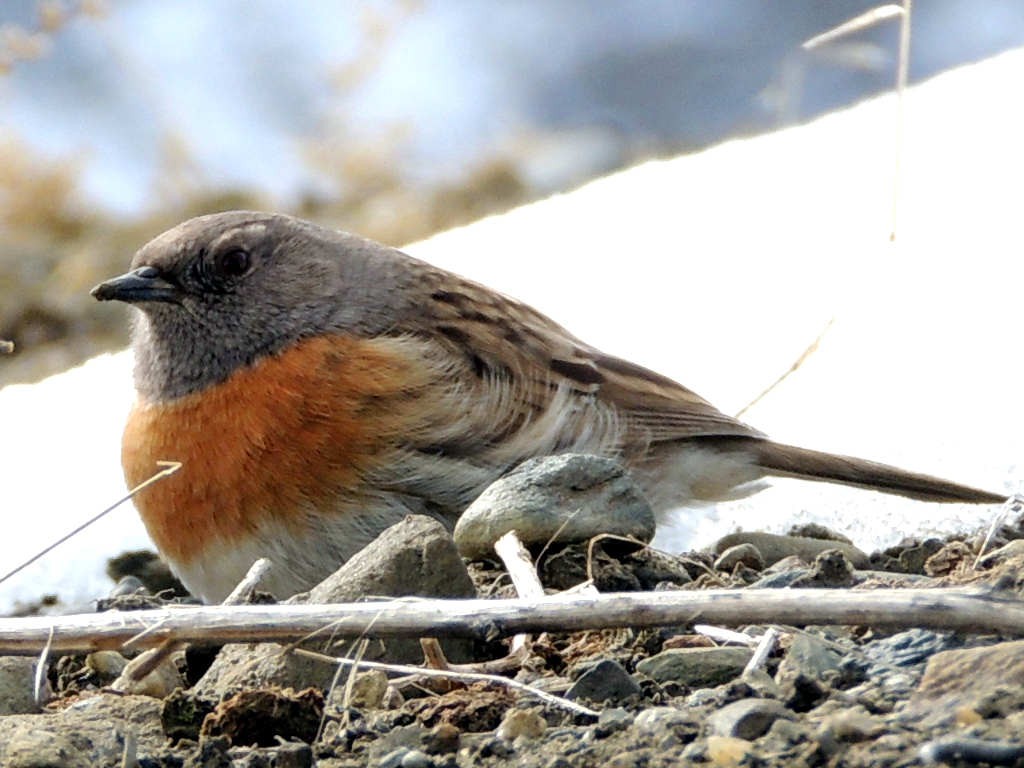
Prunella rubeculoides (Robin accentor)
The Robin Accentor (Prunella rubeculoides) is a captivating high-altitude bird species commonly observed in the upper reaches of the Great Himalayan National Park (GHNP). Known for its subtle beauty and melodious call, this bird is a member of the accentor family, which is well adapted to life in rugged mountain terrains. Birdwatchers and nature enthusiasts visiting GHNP are often rewarded with sightings of this elusive species, especially in alpine and subalpine regions.
Appearance and Behavior
The Robin Accentor is a small, unassuming bird with brownish upperparts and a rufous breast that gives it its “robin” name. It has streaked plumage that helps it blend seamlessly into its rocky, shrub-dotted surroundings. These birds are typically seen alone or in pairs and are most active during the early morning hours.
They forage on the ground for insects, seeds, and small invertebrates, often flicking their tails and wings in a characteristic fashion. Despite its shy nature, the Robin Accentor’s melodious whistle can often give away its presence.
Habitat and Range in GHNP
In the Great Himalayan National Park, the Robin Accentor is primarily found at elevations between 3,000 and 5,000 meters. It favors alpine meadows, rocky slopes, and shrubland near the snowline. During the harshest winter months, it may descend to slightly lower elevations but remains within the cold high-altitude zone.
The park’s undisturbed high-elevation environments provide ideal nesting and feeding grounds for this species. GHNP’s protection of these habitats is crucial for the long-term survival of high-altitude bird species like the Robin Accentor.
| Common name | Robin Accentor |
| Scientific name | Prunella rubeculoides |
| Family | Prunellinae |
| Description | It is a resident bird of Himalayas, having uniform grey head, rusty-orange band across breast, and whitish belly. It breeds in dwarf scrub and sedge clumps; and in winters it migrates around upland villages. It is found in an altitude of 3600-5300m and in winter it migrates below 2000m. |
Breeding and Nesting
Robin Accentors typically breed during the spring and summer months. They construct cup-shaped nests in rock crevices or under dense shrubs. These nests are well-camouflaged, helping to protect the eggs and young birds from predators. A typical clutch consists of 3–5 eggs.
Their breeding success is highly dependent on the availability of insect prey, which thrives in the rich alpine flora of GHNP during warmer months.
Conservation Status
Currently listed as a species of Least Concern by the IUCN, the Robin Accentor still benefits from habitat protection provided by national parks like GHNP. As climate change and human activity continue to impact mountain ecosystems, long-term conservation of their breeding and feeding habitats becomes increasingly important.
Conclusion
The Robin Accentor (Prunella rubeculoides) is an emblem of GHNP’s alpine biodiversity. Its presence in the park is a reminder of the fragile and beautiful life that thrives in extreme environments. For birdwatchers and conservationists alike, spotting the Robin Accentor is a highlight of any high-altitude journey through the Great Himalayan National Park.



